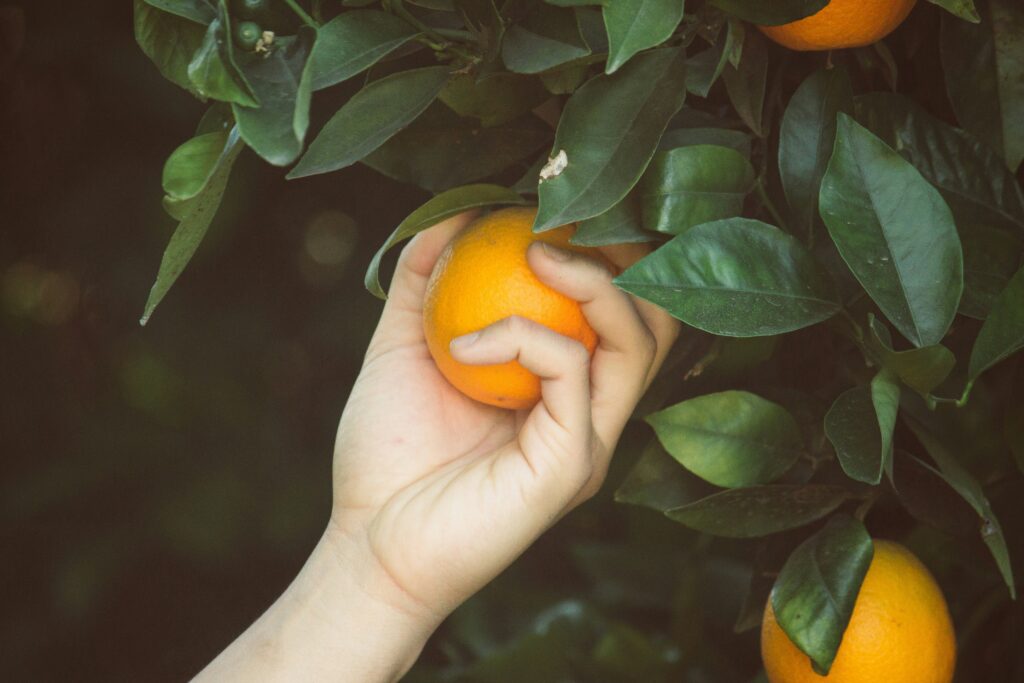Finding the Parts in the Whole: Crafting Play Therapy Course Content
Today, I’ve been sitting at my desk, feeling inspired. I’m in the process of creating play therapy course content, something that feels both exciting and overwhelming. It is training in a neuroscience informed, attachment based, somatic play therapy. Over the years, I’ve integrated so much wisdom from my clients, my experiences, and my mentors. Now, I’m ready to bring what I know together in a way that can serve others—whether they are just starting their play therapy journey, seeking to deepen their knowledge of relational trauma or interpersonal neurobiology, or looking to connect with a supportive community of like-minded practitioners.
But I’m not quite there yet. The content is still taking shape. It’s taking the shape of an orange.
The process of taking everything I know—what’s true, effective, and worth sharing—and organizing it into a logical, accessible, digestible format feels a lot like trying to figure out which part of the orange is most important. Should I start with the seeds? Maybe, but then there’s the skin, the juice, the pulp, and that strange, thin skin around each slice. Each part of the orange is important, and yet, the orange as a whole is what matters. My practice, too, is a whole thing—a blend of many aspects and considerations all functioning at once. It’s hard to step back and break it all into little parts when it feels like one cohesive entity. As I’ve moved through years of play sessions, hours of educational workshops, and countless conversations with mentors in the magical world of play therapy, my style and understanding have evolved in layers.
It’s been a circular process—each new idea building on what came before, strengthening or lightening earlier learnings, making them more effective. It feels like the rings of a tree growing outward—always the same shape, always connected to the last ring, but expanding in size, strength, and space.

Or, like putting layers of papier-mâché on a balloon. At the end, it’s no longer just a collection of individual pieces, but an entire art piece—a whole, glorious creation. It’s not the art, and it’s not the individual pieces anymore. It’s something bigger.
Peeling back the layers and breaking them into smaller, more accessible pieces is part of this journey.
What I Have Compiled So Far:
Relational Embodied Play Therapy is…
- Neuroscience-Informed: The scaffolding that frames my play therapy work is the Polyvagal Theory and the Window of Tolerance. These concepts guide how I understand and work with the nervous system, helping children feel safe and regulated in the therapy process.
- Trauma-Focused: All challenges are viewed through the lens of trauma—understanding that trauma can show up in many forms, from acute incidents to developmental and relational trauma. I consider any experience that disrupts a child’s sense of safety or trust as a potential trauma. Together we explore material in the nervous system that has not been digested and find ways to free the child from the weight of their past experiences.
- Based in Child-Centered and Expressive Play Therapy: Every child is met where they are, with respect for their inherent worth and dignity. Therapy is tailored to each child’s individual needs, following their lead, while providing gentle, curious guidance when necessary. The therapy always works within the language of symbols, metaphors within the play.
- A Somatic Therapy: Change happens through the body. We live in a culture that is left-brained—focused and predominantly disembodied. To facilitate true healing, we must reconnect with the body. The work emphasizes regulation, co-regulation, and self-regulation. As the therapist, I am attuned to my own emobodiment, which provides critical information about what’s happening in session and what the child needs.
- Attachment-Informed: Relational Embodied Play Therapy is deeply grounded in attachment theory. We explore how attachment shapes a child’s sense of self and how to repair any injuries to attachment that may have occurred. This also includes fortifying existing positive relationships, especially with caregivers and parents.
The Challenge of Course Creation
Sitting with a play therapist and having a consultation conversation can feel simple and organic. But translating the essence of this work into an orderly, digestible course format is a different challenge altogether. It’s like trying to explain every nuance of an orange—what makes it sweet, what makes it sour, what each part contributes—without losing the experience of the orange as a whole. In a consultation, the orange remains just that—the whole fruit, seen from various angles, appreciated in its entirety. In a course, I need to break it into smaller, bite-sized pieces. But it’s not always easy to pull apart something that feels inherently interconnected.

Still, I’m grateful for metaphors. They help me make sense of the process. And I’m learning to embrace both the whole and the parts, trusting that this journey will help me share what I’ve learned in a way that’s both useful and meaningful to others looking for somatic play therapy content.
Insights on Play Therapy, Neuroscience, and Professional Growth
Stay Connected
Join our newsletter to receive reflections, resources, and updates on the transformative power of play therapy and somatic approaches. Be the first to know about upcoming trainings, workshops, and consultations designed for therapists like you.
Sign up to join our newsletter.
Thank you!
You have successfully joined our subscriber list.
Relational Embodied offers therapist consultation and teaching about neuroscience-informed, non-directive play therapy, somatic approaches, and right-brained, relational therapy.
rachael@relationalembodied.com
back to the top
© Relational Embodied | All rights reserved | Privacy Policy | Terms | Website Design by Avenlee Collective
©Relational Embodied | All rights reserved
Privacy Policy | Terms
Website Design by Avenlee Collective